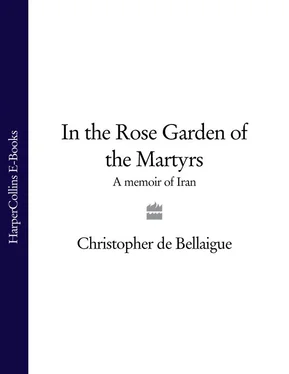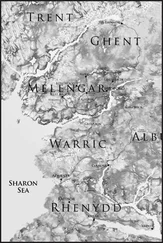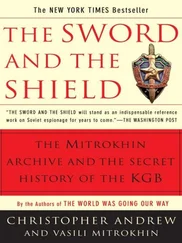Before the Revolution, Iran and Iraq had been rivals, but the Shah had enjoyed the advantage. Being Arab nationalists, the Baathists had been furious when Iran, supported diplomatically by Britain and America, occupied three islands in the Persian Gulf in 1971. In response, Iraq expelled some seventy-five thousand Shi’as of Iranian origin and allied itself to the Soviet Union. But the Iraqis and Russians never built up the kind of intimate relationship that the Shah enjoyed with the US. In case of war, Iraq’s elderly Soviet kit would be no match for Iran’s expanding arsenal of sophisticated American weaponry. Access to US armaments was Iran’s reward for being the ‘third pillar’ – the other two pillars being Israel and Saudi Arabia – of America’s anti-Soviet policy in the Middle East.
In 1974, with American support, Iran intervened to help the Kurds of northern Iraq revive their intermittent insurgency against the government in Baghdad. As the likelihood of a destabilizing war between Iran and Iraq increased, so did international efforts to broker a lasting peace between the neighbours. In 1975, in Algiers, the Shah and Saddam signed an accord that required their respective governments to stop interfering in each other’s domestic affairs, and which ostensibly settled outstanding border disputes. Iraq conceded to Iran part ownership of the strategic southern reaches of their fluvial border, the Arab River. The Shah, and the Americans, ended their support for the Kurdish revolt.
Four months before the Revolution, the Iraqis complied with the Shah’s request that they expel Khomeini, who had been living in exile since 1965 in the Iraqi shrine city of Najaf. He went to Paris, which turned out to be a far better place from which to organize a revolution. On his return to Iran, he made it clear that he wanted political Islam to spread. In Iraq, thousands of Shi’a clerics, who remembered Khomeini from his period of exile, agreed. Ayatollah Muhammad Baqer al-Sadr, the most prominent of them, sent Khomeini a telegram in which he predicted that ‘other tyrants’ would also meet their reckoning. The Baathists put him under house arrest.
In June 1979, Saddam seized absolute power. He stepped up repression of militant Shi’a groups that Iran was arming and training. As the revolt in Iranian Kurdistan intensified, he took a leaf out of the Shah’s book, providing the insurgents with cash and arms. (The Islamic regime started supporting the remnants of the Iraqi Kurdish group whose rebellion had been crushed in the wake of the 1975 Algiers Accord.) Saddam also armed secessionist groups in the Iranian province of Khuzistan, which sits on most of Iran’s on-shore oil and gas.
In the first half of 1980, hostilities became overt. An Iran-backed Shi’a group made an unsuccessful attempt on the life of Tariq Aziz, Saddam’s foreign minister. Iraq bombed an Iranian border town and expelled more Shi’as of Iranian descent. When he learned that al-Sadr was planning to visit Tehran, Saddam had him executed. The following month, Iran foiled a coup attempt sponsored by exiled monarchists. The death of the deposed Shah deprived the monarchists of their figurehead. If the Baathists wanted to bring about Khomeini’s fall, it was clear that they would have to push him themselves.
In 1979, Egypt’s Anwar Sadat had become the first Arab leader to make peace with Israel, earning the gratitude of the US and the opprobrium of millions of Muslims. With that deal, Egypt was deposed as unofficial leader of the Arab world. A show of force and determination, Saddam calculated, would make the position his. He wanted to suck Khuzistan into his sphere of influence, and to have a say in the composition of a post-Khomeini government in Iran, a government that would be friendly to Iraq. Iraq’s state television was to describe the Iranians as ‘flies’; the hatred, amply requited, of Arabs for Persians may have facilitated his decision to attack.
For the first time since the Baathists assumed power in 1968, it seemed as though Iraq could win a war against Iran. The revolutionary regime was split between moderates and hardliners. Although the ethnic rebellions, with the exception of the Kurdish one, had been put down, other armed groups, some of them leaning to the left, seemed to be preparing to come into conflict with the new clerical establishment. The Iraqis, Saddam was advised, would be welcomed as liberators by the Arabs of Khuzistan. In the event of determined aggression, Khomeini’s republic would collapse.
Assessment of the two countries’ respective military capabilities suggested that Iraq had closed the gap on its neighbour. Executions, desertions, purges and reassignments had cut Iran’s army by 40 per cent. The US Embassy hostage crisis, along with Iran’s hostility to the 1979 Soviet invasion of Afghanistan, had isolated the new regime from the world’s biggest arms producers. On the eve of war, about 30 per cent of Iran’s land force equipment, and more than half its aircraft, were not operational. Iraq’s armed forces, on the other hand, kept on growing.
On 22 September 1980 Iraq invaded Iran. The land offensive, launched at four points along a seven hundred-kilometre border, was strikingly similar to an exercise that had been devised forty years before by British instructors at the Baghdad War Academy. An inefficient command structure, excessive caution and unfamiliarity with combined arms operations slowed the advance. After four days it came to a temporary halt.
For the first two days of the War, the advancing Iraqis were not met by any large unit. Iran’s mobilization, when it finally got underway, was calamitously managed. It took one division six weeks to get from a base in eastern Iran to the theatre in the west. Many volunteers who went to the front were armed with Molotov cocktails. A plan, predating the Revolution, for the Americans to computerise Iran’s spare parts inventories, had not been completed. The Iranians didn’t know what they had in their stores.
It’s a few weeks into the Iraqi violation. Saddam’s expectations have been confounded. Rather than divide them, the invasion has united normal Iranians; they’re rushing to enlist in a kind of euphoria. The Iraqi advance has been slower and more costly than anyone expected. The Arabs of Khuzistan have reacted sullenly to their Iraqi ‘liberators’. In a couple of weeks, when the front stabilizes, the Iraqis will have overrun more than ten thousand square miles of Iranian territory, including a third of Khuzistan, but only one important Iranian city, the port of Khorramshahr.
It’s a cold day, and the Imam is sitting on a dais, underneath a sign that reads Allah. The men in front of him, most of them wearing military uniform, are crying. They’re crying because their Imam is praising them and they consider themselves unworthy of his praise. ‘I feel admiration,’ he’s saying, ‘before these smiling celestial faces, before these heartfelt sobs.’ The fighters, killers of Iraqis, convulse, tears pouring down their faces. ‘I feel insignificant,’ the Imam goes on. The weeping reaches a crescendo.
He’s the greatest communicator. He understands television instinctively. ‘In the Name of God, the Merciful, the Compassionate,’ he starts his speeches, and then … silence. Fifteen seconds, or twenty: the Imam looking at you, through you, and the hairs on the back of your neck rise. His frail head slightly bowed, thick black brows like guillotines about to fall.
Marvel at his contempt, his contempt for Saddam’s accounting of power and advantage, for the unmanliness of his assault. When the Imam talks to his people, it’s without the histrionics of the actor Saddam, or Carter’s wheedling. You learn to love, and fear, his inviolable monotone.
Like the imamate of Hossein, or Ali, his leadership is supranational. When he speaks, the world listens. (Before, when Kennedy and Nixon and Carter spoke, the Shah listened.) America, mighty America, quakes. As he addresses the people, the Imam inlays the War into the marble of Islamic endeavour. When he finishes, you realize it’s impossible – morally, logically, physically – for Iran to give in.
Читать дальше












